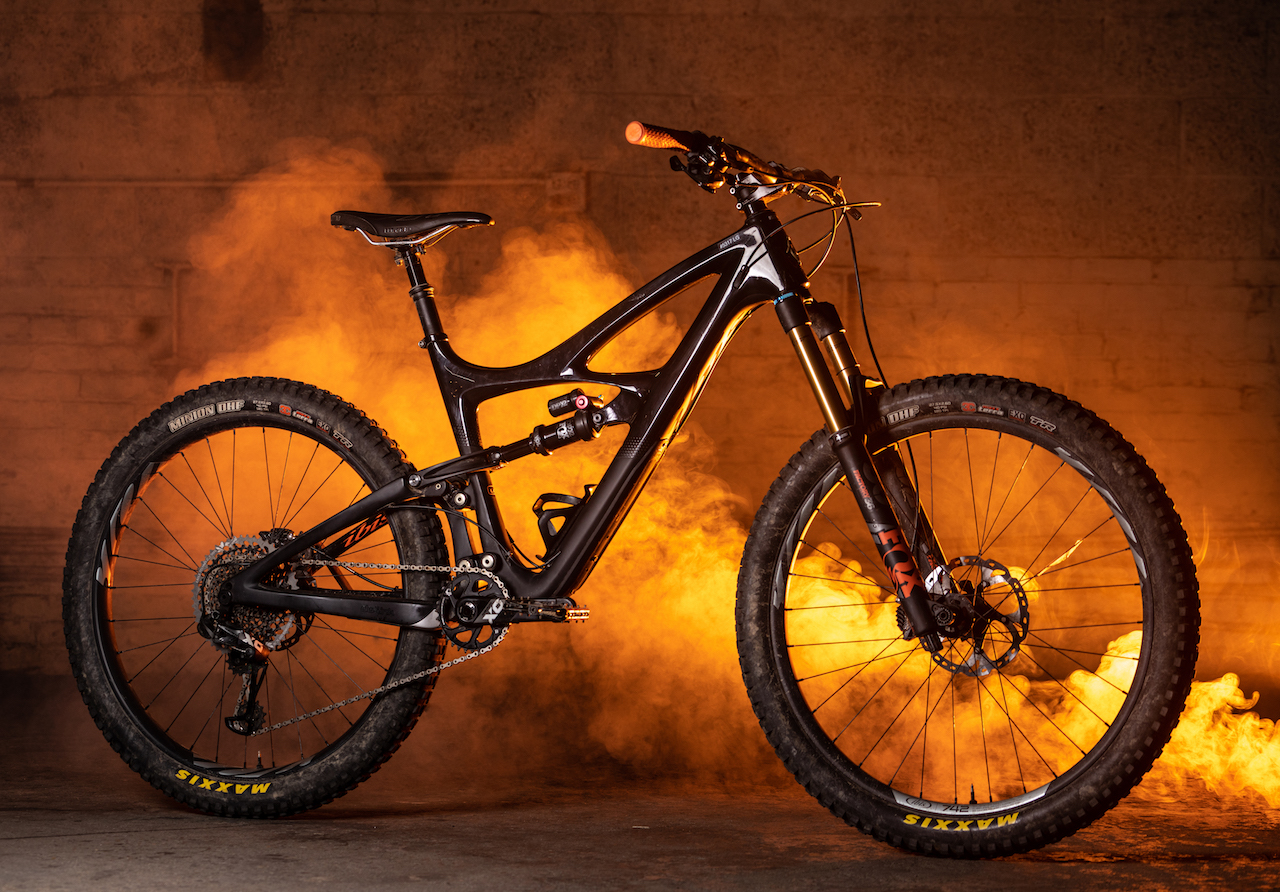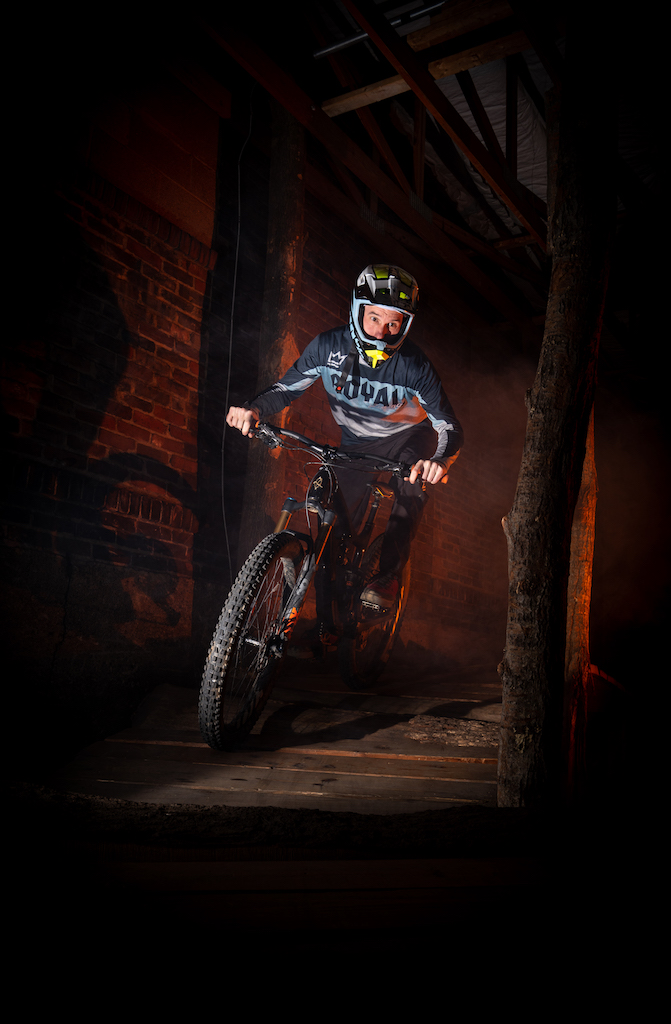In Print: Mojo HD4
Originally posted on July 24, 2019 at 4:20 amEditor’s Note: This feature first appeared in issue 210 of our print edition of Dirt Rag Magazine. Like what you see? Subscribe today to catch issue 212, in production now and soon to set sail.
Ibis Mojo HD4
Price: $6,999
Sizes: S, M, L (tested), XL
Online: ibiscycles.com
Tester: Brett Rothmeyer
Age: 41
Weight: 170 lbs.
Height: 6’ 1”
Inseam: 32”
Reach: 17.9”
Stack: 23.8”
Top Tube: 24.7”
Head Tube: 64.9°
Seat Tube: 74°
BB Height: 13.5”
Chainstays: 16.9”
Weight: 29.5 lbs.
On summer Sundays I normally would hustle together a breakfast and rush out the door for a few hours of riding with friends. This past summer I decided to start my Sunday’s a bit slower, enjoying an extra cup of coffee as I settled in to watch World Cup Downhill racing. I was mesmerized by the speed and lack of personal well-being displayed by the riders. It reminded me of watching skateboard videos as a teenager and evoked the same sort of excitement. After the races, I would jump on my high-posted hardtail from 2007 and try to push the downhills beyond my accepted abilities. I tried to imagine what it would like to ride like a real downhiller bike more suitable for rocketing down mountains.
Enter the Mojo HD4 from Ibis. Stealth black and ready to attack the trails in all its pro enduro bike form. Having watched a fair amount of Enduro World Series highlights, I knew that the HD4 was more than enough bike for me to attempt to live out some sort of downhill fantasy.
The Bike
The Mojo HD4 is the bigger sibling to the HD3. Both bikes are based around the 27.5 wheel size and the dw-link suspension design, but the HD4 offers a more aggressive platform than the HD3. When the makers of the bike tell you that this is the weapon of choice for its pro EWS athletes, you nod your head in agreement that this is indeed enough bike for your needs and abilities. A full carbon frameset will run you $2,999 and Ibis offers the HD4 in a variety of build packages starting at $4,199 and going all the way up to $9,599.

With a head tube angle at 64.9 degrees (not that far off from current downhill frames), it becomes clear that the HD4 is purpose-built for going downhill fast and confidently. Equipped with the Fox Float 36 Performance Series 160 mm, 27.5 inch, 15QR and the Fox Float Performance Series DPX2 with 153 mm, there is plenty of travel to absorb mass amounts of chunder. Our version of the HD4 came spec’d with SRAM’s X01 Eagle 12 speed drivetrain and set of the Shimano XT four-piston brakes. The four-piston XTs were a welcome feature on the steep chutes of Windrock and Pisgah National Forest where stopping power was precise and strong, rescuing me at critical moments of second-guessing my abilities. Staying in line with the industry standards, the Mojo came equipped with a set of Maxxis Minion DHF WT 27.5×2.6 tires. While other tire brands are making equally capable treads, there is a certain level of confidence instilled when plummeting into rough and unknown territory while rolling on a set of Minions. The Mojo can also clear up to a 2.8 tire if you’re looking for a little extra contact to the ground out of your treads.
The Ride
From the first time I put a leg over the Mojo HD4, it was clear that this is no ordinary trail bike. The fork raked out noticeably farther than other bikes I have ridden in this “longer, slacker” era of trail bikes. Descending through rough and tumble rock gardens and pushing through berms, it as if the bike is whispering to you, “It’s OK, you can go faster.” While riding technical lines at both Wind Rock and the endless root and rock gutters of the Pisgah National Forest, the HD4 felt right at home. With 160 mmm up front and 153 mm in the rear, the bike often turns terrifying terrain into much more manageable obstacles.

As the HD4 is made for the elite riders of the Enduro World Series, its ability to pedal exceeded my expectations. That’s not to say that you’re going to be gunning for KOMs over climbs on the HD4, but climbing on this machine was far from a burden. Whether it was pedaling up a 5-mile gravel climb in the Smokey Mountains or dashing around the flowing trails of our local parks, the HD4 pedaled efficiently and smoothly. While both the front and rear suspension do not offer a full lockout mode, I only found this to be a nuisance on some of the steeper sustained climbs in the mountains when I wanted to get out of the saddle for a little extra power.
Conclusion
The Mojo HD4 seems to be the perfect bike for the rider looking to hit the bike park on the weekend or knock out some shuttle runs on steep and unruly terrain. If you’re someone that likes taking the fastest lines or turning every root, rock, and bump into a launch ramp on your local trails, the HD4 allows you to turn up the fun meter. I have had the luxury of riding the Mojo HD4 on all sorts of terrain, and it handles it all with ease, but where it excels is on steep and technical descents. It seems to have an ability to make whichever line you choose to be the right one. The Mojo is like a downhill bike that is a pleasure to pedal, perhaps just as fun but significantly more versatile. If you are searching for a bike that can handle the local enduro circuit and still be a fun daily trail bike, the Mojo HD4 may be the next mean machine on your want list.